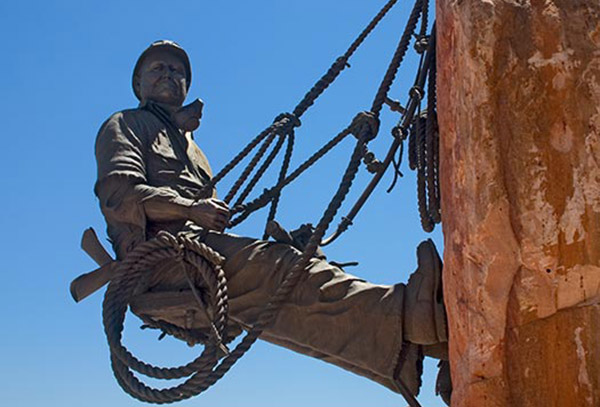Stretching across the Colorado River, Hoover Dam was one of the great engineering feats of the 20th century and forever changed the American southwest.
The Boulder-Canyon Project Act, signed by President Calvin Coolidge in 1928, began the process that ultimately led to the construction of Hoover Dam in Black Canyon on the Colorado River. The building of Hoover Dam, originally called Bolder Dam, was a colossal undertaking, all the more impressive because of the efficiency with which it was executed.
The Origins of Hoover Dam
Hoover Dam was built to achieve four main goals; alleviate flooding along the Colorado River, provide a man-made lake for storage water, control the amount of silt flowing down the river, and provide electrical power for the growing southwest.
Six Companies Inc. of San Francisco was awarded the contract to build the dam in March of 1931. Prior to World War II it was the largest construction contract ever awarded by the federal government. In order to complete the project in a timely manner in the demanding environment of the southwest desert, Six Companies built “Boulder City” to house all the workers employed on the project.
Within a year the town of Boulder City had been built seven miles from the construction site to house all the workers. Boulder City included a series of highways, railroads, and machine shops in addition to churches, stores, schools, restaurants, a 700 seat theater, recreation buildings, a hotel, and a sixty bed hospital. The hospital had two ambulances and maintained two first-aid stations at the job-site. During the project’s duration they treated 35,000 patients and as many as 1,500 in one month.
Diverting the Colorado River
Two 56 foot diameter tunnels were dug on each side of the Colorado River, each more than three-quarters of a mile long, to divert the river from its natural course while the area in the riverbed was excavated for the dam. As the river was diverted on November 13, 1932, a temporary barrier of earth and rock was poured across the river channel. This allowed for upstream and downstream cofferdams to be built, providing a dry area where the base of the dam could be dug into the river bed.
Workers called “highscalers” were lowered from cliffs overlooking the construction site in order to strip loose rock from the canyon walls for the placement of dam abutments and other necessary connections. Hanging from ropes and boson chairs the highscalers worked through the desert heat and the dust of drilling to complete their jobs. Amazingly only seven men lost their lives during this process, considered the most dangerous of the entire project. Highscalers removed an amount of rock equivalent to ten city blocks long and as tall as the Empire State Building.
Completion of Hoover Dam
In June of 1933 the first load of concrete was poured to form the base of Hoover Dam. A system of five 25 ton cableways stretching from one side of Black Canyon to the other allowed for continuous pouring of 16 ton buckets of concrete, each containing 8 cubic yards of material.
The dam’s designers encountered numerous engineering problems while pouring such enormous volumes of concrete in such a short period of time. Cracking of the concrete due to temperature changes was a major concern that led to special methods being developed for cooling the lower portions of the dam as upper sections were poured.
Working on a 24 hour a day schedule, over a million yards of concrete were poured in just seven months. With a combination of masterful construction, engineering, and design skills, all the major features of the dam were poured by the summer of 1935. Franklin Roosevelt presided at Hoover Dam’s dedication ceremonies on September 30th of that year as the edifice began generating power, forever altering the face of the American southwest.








